- WCCCD’s mission is to empower individuals, businesses and communities to achieve their goals through accessible services, culturally diverse experiences and globally competitive higher education and career advancement programs.
School Highlights
Wayne County Community College District serves 18,704 students (11% of students are full-time).
The college's student:teacher ratio of 26:1 is higher than the state community college average of 19:1.
Minority enrollment is 86% of the student body (majority Black), which is more than the state average of 40%.
Quick Stats (2025)
- Enrollment: 18,704 students
- In-state tuition: $3,052
- Out-state tuition: $3,772
- Student:teacher ratio: 26:1
- Minority enrollment: 86%
- Source: Integrated Postsecondary Education Data System (IPEDS)
Top Rankings
Wayne County Community College District ranks among the top 20% of public schools in Michigan for:
School Overview
The teacher population of 714 teachers has stayed relatively flat over five years.
Wayne County Community College District
(MI) Community College Avg.
Carnegie Classification
Associate's Colleges: High Transfer-High Nontraditional
Baccalaureate/Associate's Colleges: Associate's Dominant
Institution Level
At least 2 but less than 4 years
At least 2 but less than 4 years
Institution Control
Public
Public
Total Faculty
714 staff
224 staff
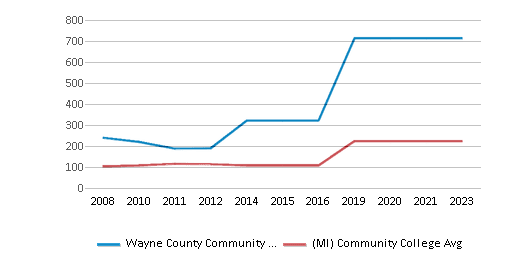
School Calendar
Student Body
The student population of Wayne County Community College District has grown by 29% over five years.
The student:teacher ratio of 26:1 has increased from 15:1 over five years.
The Wayne County Community College District diversity score of 0.53 is less than the state average of 0.60. The school's diversity has stayed relatively flat over five years.
Total Enrollment
18,704 students
2,154 students
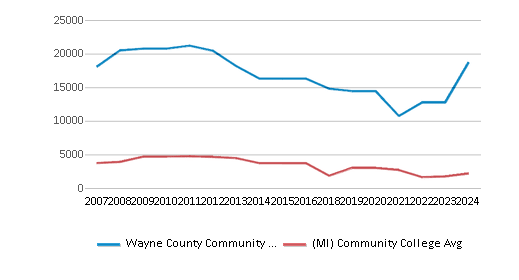
Student : Teacher Ratio
26:1
19:1
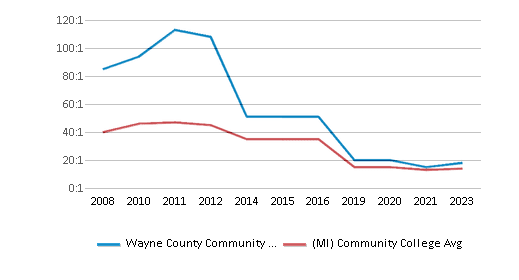
# Full-Time Students
2,089 students
878 students
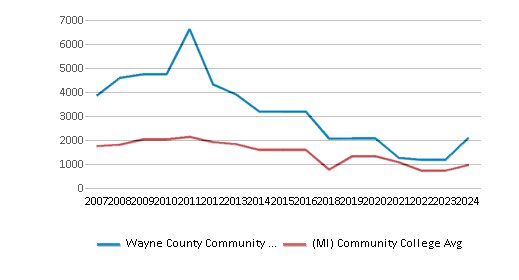
# Part-Time Students
16,615 students
1,714 students
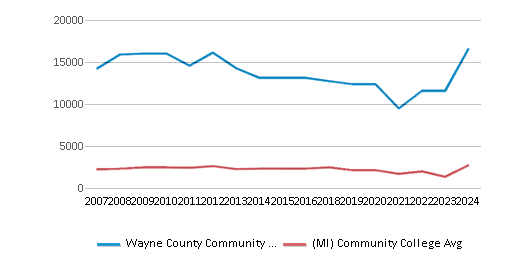
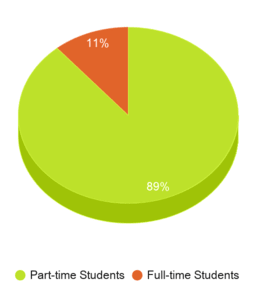
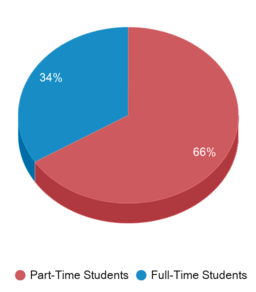
# Enrollment Undergraduate
187 students
225 students
# Full-Time Undergraduate Students
2,089 students
889 students
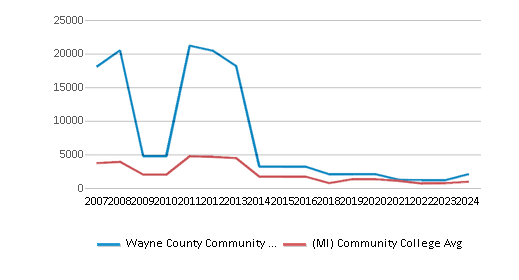
# Full-Time Graduate Students
n/a
4 students
# Part-Time Undergraduate Students
16,615 students
1,714 students
# Part-Time Graduate Students
n/a
4 students
Total Dormitory Capacity
n/a
178 students
% American Indian/Alaskan
n/a
n/a
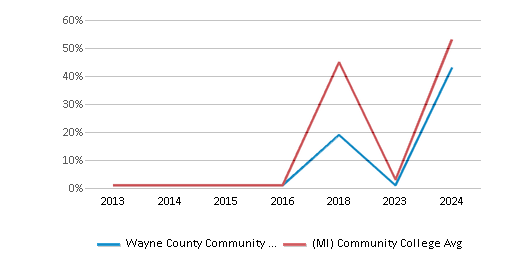
% Asian
1%
4%
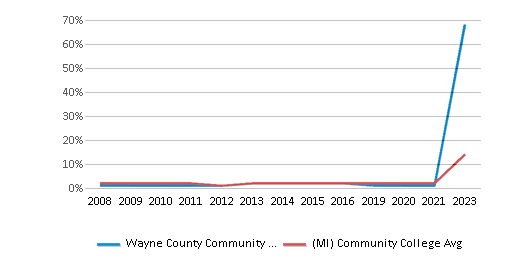
% Hispanic
3%
7%
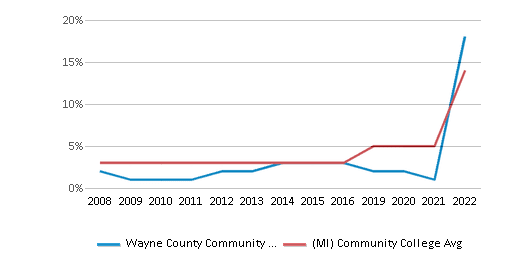
% Black
67%
16%
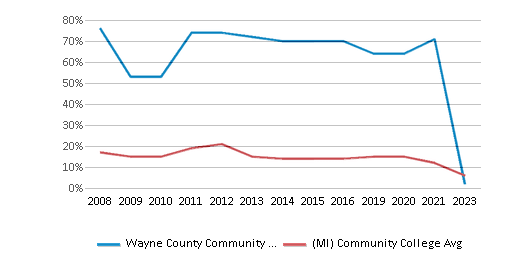
% White
14%
60%
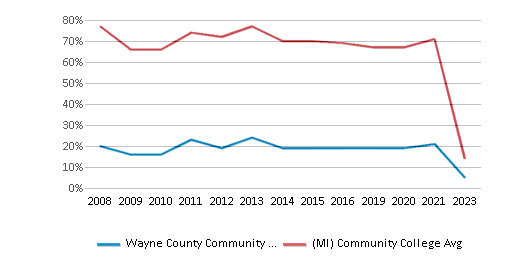
% Hawaiian
n/a
1%
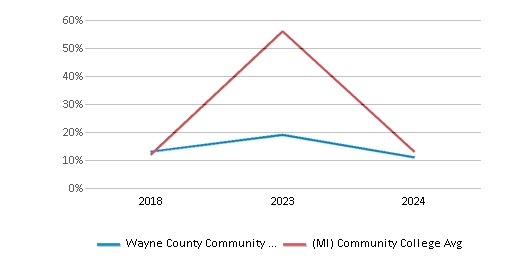
% Two or more races
7%
4%
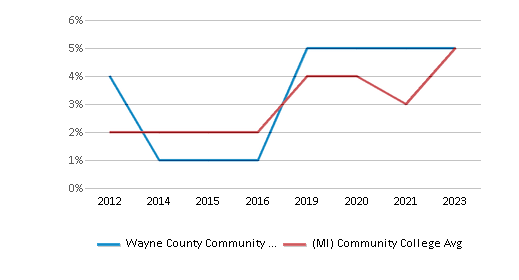
% Non Resident races
2%
2%
% Unknown races
6%
6%
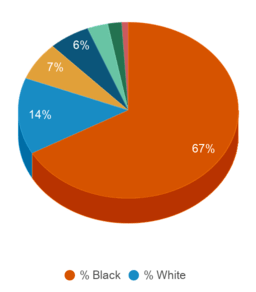
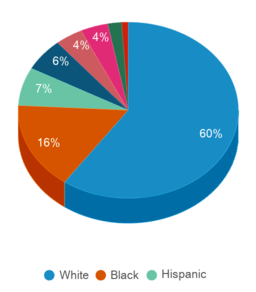
Diversity Score
0.53
0.60
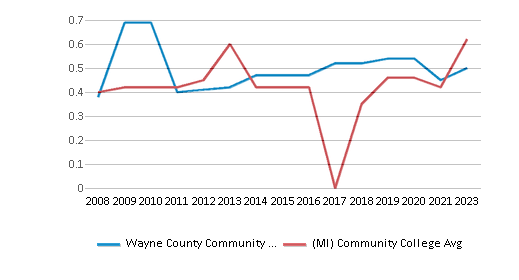
College Completion Rate (Students who graduate in less than 4 years)
0.1283%
0.2881%
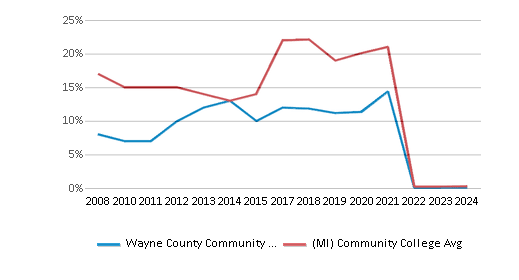
College Completion Rate (Students who graduate in 4 years or more than 4 years)
n/a
0.2071%
Average Graduate Earnings (10 Years)
$27,800
$30,700
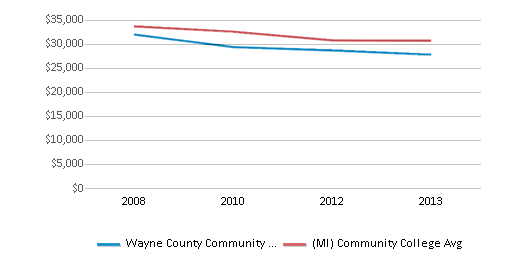
Tuition and Acceptance Rate
The public in-state tuition of $3,052 is less than the state average of $4,952. The in-state tuition has declined by 6% over four years.
The public out-state tuition of $3,772 is less than the state average of $6,896. The out-state tuition has declined by 5% over four years.
In-State Tuition Fees
$3,052
$4,952
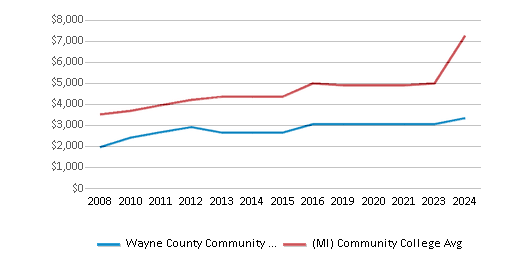
Out-State Tuition Fees
$3,772
$6,896
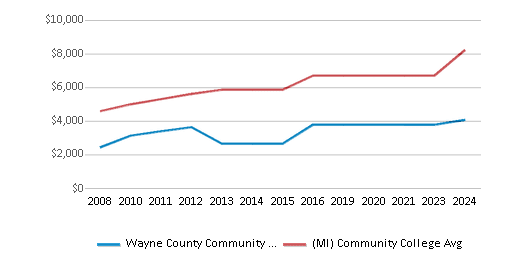
% Students Receiving Some Financial Aid
71%
89%
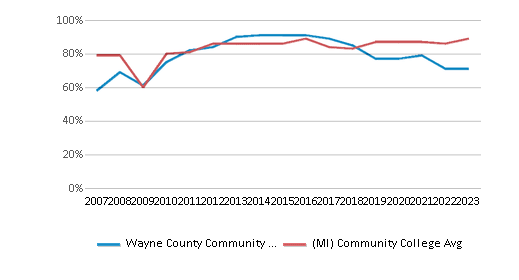
Median Debt for Graduates
$12,250
$11,704
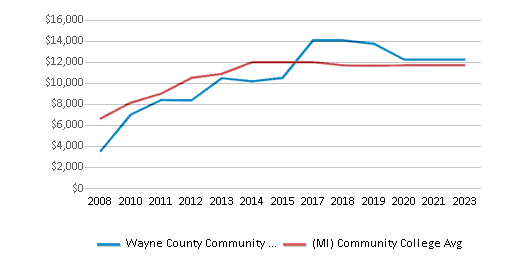
Median Debt for Dropouts
$6,957
$5,500
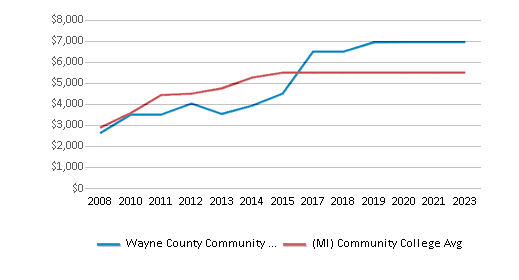
Acceptance Rate
n/a
98%
Source: 2024 (or latest year available) Integrated Postsecondary Education Data System (IPEDS)
School Notes
- Wayne County Community College District has completed 35 years of uninterrupted operation and development of comprehensive educational services. Both directly and indirectly, our students and the 2.3 million people living within the College's service district have enjoyed the benefits of constantly improved instructional programs and community services. The Wayne County Community College District (WCCCD) is a multi-campus multi-cultural institution seeking to improve the quality of life in our communities. WCCCD provides affordable higher education and flexible training opportunities through a diverse catalog of courses, programs, and initiatives. The College's five campuses are located in industrial, rural and metropolitan areas where a major share of Michigan's technical and skilled occupations is located. Because of the diversity of its service areas, WCCCD places a strong emphasis on occupational and career programs, and traditional college and university transfer programs, including those within the liberal arts discipline. For many of our students the college offers an opportunity to transfer to four – year colleges or universities to obtain advanced degrees. Others pursue self-enrichment through a wide variety of non-credit workshops, from personal financial planning and property management to basic and intermediate computer skill training, through the college's Community Education Department. Wayne County Community College District has received a 10-year accreditation at the associate's degree levels by the Commission on Institutions Higher Education of the North Central Association of Colleges and Schools.
Frequently Asked Questions
How much does Wayne County Community College District cost?
Wayne County Community College District's tuition is approximately $3,052 for In-State students and $3,772 for Out-State students.
What is Wayne County Community College District's ranking?
Wayne County Community College District ranks among the top 20% of community college in Michigan for: Least expensive tuition and Largest student body.
In what neighborhood is Wayne County Community College District located?
Wayne County Community College District is located in the West Side Industrial neighborhood of Detroit, MI.
Recent Articles

Unlocking Airport Career Opportunities: Your Guide to Ground Jobs
Discover the diverse range of ground jobs at mid-size U.S. airports, their educational requirements, and how community colleges can prepare you for these exciting careers.

Careers: Dental Hygienist, Medical Lab Technician & More Healthcare Positions
Considering the healthcare field? Your community college can equip you for any number of healthcare positions, including Dental Hygienist, Medical Lab Technician, and more.

How To Craft the Perfect College Admissions Essay
Read on to learn the ins and outs of crafting the perfect college application essay.









